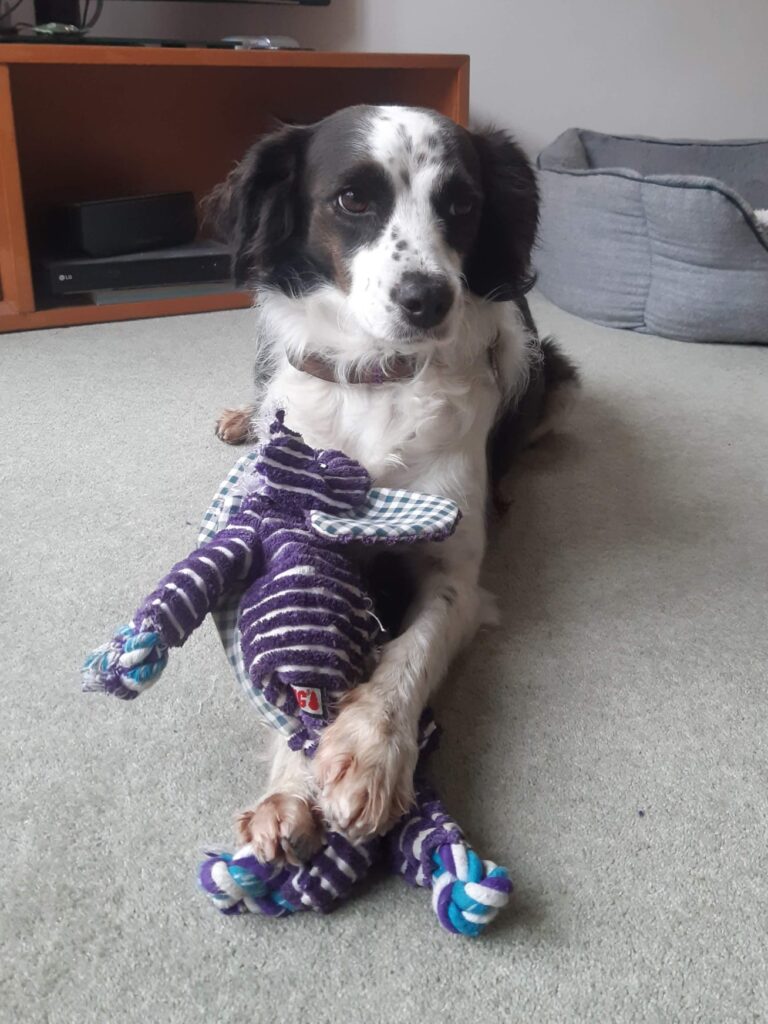Sadie’s seizure success!
Sadie a beautiful 3-year-old crossbreed dog was referred to our Neurology and Neurosurgery team for investigation of a one-year history of epileptic seizures in the summer of 2022. Despite being on four different antiseizure medications, she was still having fits every two to three weeks. Her seizures affected her whole body, with loss of consciousness, paddling movements of all four limbs and uncontrolled urination, and they were severely affecting her quality of life; on one occasion Sadie had 17 seizures in 36 hours, and her antiseizure medications were causing her to be very sedated and wobbly.

Jessica Zilli, a Resident in our Neurology team examined her and found only mild abnormalities, including her being slightly wobbly on all four of her limbs. However, this was more likely to be a side effect of her antiseizure medications rather than clinical signs related to a neurologic condition.
Jessica suspected genetic epilepsy (i.e. idiopathic epilepsy) admitted Sadie into the hospital to investigate further and look at other possible causes for her epileptic seizures such as structural brain lesions, infections or metabolic disease.
Sadie had blood tests, an MRI scan of her brain and cerebrospinal fluid analysis and they were all normal, consistent with the diagnosis of idiopathic epilepsy.

Idiopathic epilepsy is a common neurological disease in dogs and is the most common cause for seizures in young dogs. It is defined as two or more unprovoked seizures, at least 24 hours apart, with the first seizure occurring between 6 months and 6 years of age, and the dogs having a normal physical and neurological examination between seizures. Idiopathic epilepsy is diagnosed when no underlying cause (other than a suspected genetic/hereditary origin) can be found on investigations, including blood tests and brain scans. This means that it is a condition where the diagnosis is reached by excluding other important causes for seizures.

Given the fact that Sadie had not responded to her current antiseizure medications, she was prescribed an additional medication called potassium bromide and it was recommended that her food was changed to one specifically formulated for epileptic dogs.

Nearly 8 months later Sadie came back for a re-check and the great news was that in that time she hadn’t had any further seizures! Moreover, given her great response to the newly started treatment, it was possible to progressively reduce and stop some of her other antiseizure drugs. Given the high risk for her to have repeat seizures, the process of reducing her medications has taken a long time but Sadie is already experiencing fewer side effects than when she first came in to see us last summer. The team hope to further improve her quality of life over the next few months.
